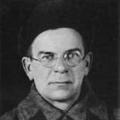Ural State Medical University. Ural State Medical University of the Ministry of Health of the Russian Federation
Story
Sverdlovsky medical school opened on March 1, 1931 on the basis of a resolution of the Council of People's Commissars of the RSFSR dated July 23, 1930. (one faculty with an enrollment of 100 people). The first director was the doctor Petr Spiridonovich Kataev.
By order of the State Committee of the Russian Federation for Higher Education dated June 23, 1995, the institute was renamed the Ural State Medical Academy (UGMA) and is currently the leading medical university in the Ural region.
Structure
The university has 8 faculties (therapeutic and preventive, pediatric, dental, medical and preventive, pharmaceutical, faculty of advanced training and professional retraining, faculty of specialization of interns, clinical residents and graduate students, faculty pre-university training), 2 departments (department of higher nursing education, department " Social work"), Central Research Laboratory, Department of Innovation information technologies, scientific library, museum and other departments.
OKB-1 Bed capacity used clinical departments, is about 10 thousand beds. Book and periodicals scientific library about 600 thousand copies, including 42 thousand volumes of foreign literature on medicine. The Academy has dormitories with 1,750 beds.
Over 4,000 students study at the university. In total, over the years of the university’s existence, more than 36 thousand doctors have been trained, more than 11 thousand doctors have undergone advanced training and specialization.
Famous Alumni
Many graduates became big statesmen, heads of medical institutions, scientists. Among them are the Minister of Health of the USSR M.D. Kovrigina, Deputy. Minister of Health of the Russian Federation F. G. Zakharov, Minister of Health of the Russian Federation V. I. Starodubov, pilot-cosmonaut V. G. Lazarev, Deputy Prime Minister Sverdlovsk region S. I. Spector, academicians of the Russian Academy of Medical Sciences B. T. Velichkovsky, L. L. Buldakov, corresponding member of the Russian Academy of Medical Sciences A. K. Guskova.
Teaching staff
The Academy has more than 70 departments, staffed by 6 academicians and 3 corresponding members of the Russian Academy of Natural Sciences, 2 academicians of the Russian Academy of Natural Sciences, 2 academicians and 4 corresponding members of the Russian Academy of Sciences, an academician of MANEB, 4 honorary academicians of foreign academies, over 100 professors and doctors of science, over 300 associate professors and candidates of science, including 5 Honored Scientists of the Russian Federation, a State Prize laureate and 2 laureates of the Academician G. F. Lang Prize.
Research work
Substantial part scientific research is carried out in close collaboration with research institutes of the branch of the Academy of Sciences of the Russian Federation (Institute of Ecology, Institute of Tuberculosis, Institute of Maternal and Infant Protection, Research Institute of Skin and Venereal Diseases, Scientific Medical Center).
Comprehensive scientific research at the institute is carried out on 11 priority scientific problems for the Middle Urals:
- Development of physicochemical foundations of pathogenesis and new means of diagnosis, prevention and treatment of human diseases (head: academician of the Academy of Natural Sciences of Russia A.P. Yastrebov);
- New technologies of preventive, clinical pediatrics and pediatric surgery (head: Professor V.V. Fomin);
- Study of the main issues of the pathogenesis of heart and vascular diseases. Development and implementation of new methods of prevention, diagnosis and treatment cardiovascular diseases(supervisor: Honored Scientist of Russia, Professor S. S. Barats);
- Improving the organization of neurosurgical care, diagnostics, complex treatment, medical and social rehabilitation for diseases and injuries nervous system(supervisor: Professor V.V. Scriabin);
- Development of optimal technologies to ensure the preservation of the health of women, mothers, fetuses and newborns (head: Honored Scientist of Russia, Professor I. I. Benediktov);
- Development of methods for the prevention, diagnosis and treatment of surgical diseases of the abdominal and thoracic cavities, endocrine glands and blood vessels (director: USSR State Prize laureate, Professor V. A. Kozlov);
- Improving highly qualified and modern uronephrological care for the population of Russia at the pre-hospital and hospital stages during the rehabilitation period (head: Professor V. N. Zhuravlev);
- Pathogenesis and molecular mechanisms of exogenous intoxication. Development of tools and methods for diagnosing and treating poisoning (supervisor: Professor V. G. Sentsov);
- Etiology, pathogenesis, clinical picture, treatment and prevention of major dental diseases (head: academician of the Academy of Natural Sciences of Russia, professor G. I. Ron);
- Development scientific foundations preserving and strengthening the health of children and adults, methods and organizational forms prevention of major non-communicable diseases, as well as methodological foundations assessment of damage to public health caused anthropogenic factors environment(supervisor: Professor A. P. Boyarsky);
- Reducing infectious morbidity in conditions of socio-economic disadvantage (supervisor: Professor V. M. Borzunov).
The USMA has postgraduate courses in 31 scientific specialties. Five specialized Councils conduct dissertation defenses for academic degrees candidate and doctor of medical sciences in 13 specialties. World-famous scientists grew up within the walls of the institute: V.V. Parin, V.N. Chernigovsky, A.P. Polosukhin, F.R. Bogdanov, I.L. Bogdanov, V.D. Chaklin. Institute scientists L. M. Ratner, I. A. Shaklein, A. T. Lidsky, A. Yu. Lurie, B. P. Kushelevsky, D. G. Shefer, S. V. Miller, A. K. Sangailo, Ya. G. Uzhansky, T. E. Vogulkina, V. N. Klimov became the founders of entire scientific directions and schools. For services to the development of healthcare, medical science and personnel training institute awarded the order Red Banner of Labor
Notes
Links
Wikimedia Foundation.
2010.
See what "Sverdlovsk Medical Institute" is in other dictionaries: Ural State University
(Ural State University) Motto “Fear the man of one book!” (Thomas Aquins ... Wikipedia State budget educational institution higher vocational education Ural State Medical Academy of the Ministry of Health and social development
Russian Federation (GBOU VPO UGMA Ministry of Health and Social Development... ... Wikipedia
Choosing a profession is a problem that is vitally important for every applicant, because not every one of them, while still in school, decides on their future and finds a specialty that is interesting to them. When choosing a higher education institution for admission, you should pay attention to a university such as the Medical Academy (Ekaterinburg).
History of the emergence of the university As evidenced historical sources , a medical academy now operating in Yekaterinburg, was founded in 1930. At that time, a corresponding decree was issued on the creation of a higher educational institution for the preparation of. The educational institution began its work approximately 1 year after the document was issued. It was called the Sverdlovsk Medical Institute.
The higher education institution functioned for several decades. In 1995, the name was renamed. The institution henceforth became known as the Ural State medical academy. The university operated with this name for quite a long time. It is remembered by many people and is used now, despite the fact that several years ago the educational organization received the status of a university.
Honey. Academy (Ekaterinburg): faculties
After its founding, the university had only one faculty. There were few students, and they had nothing to choose from future profession. Nowadays everything is completely different. Each applicant can choose the faculty that is closest to him, because the Medical Academy (Ekaterinburg) has 6 different structural divisions:
- Faculty of Medicine and Pediatrics;
- medical and preventive;
- pediatric;
- Faculty of Dentistry;
- pharmacy;
- higher nursing education and socio-psychological work.
Entrance tests
In almost all areas of training (specialties) offered by the faculties of the Yekaterinburg Medical Academy, admission is required to pass the Russian language, biology and chemistry. The exceptions are two directions - these are “ Clinical psychology" and "Social work". In the first of them they take the Russian language, biology, mathematics, and in the second - the Russian language, history and social studies.

For all entrance examinations In each area of training, minimum acceptable scores are established. They are approved annually by the Ural Medical Academy (Ekaterinburg) represented by the rector. In 2016, the highest minimum acceptable threshold was “ Medicine", "Dentistry" (in chemistry and biology it was required to score at least 50 points, and in the Russian language - 40). Lowest minimum scores were on “Social Work” (in Russian - 36, in history - 32, and in social studies - 42).
Memo for persons admitted to university
Applicants admitted to a higher education institution must purchase a white coat and cap in advance. Warns about this selection committee Medical Academy (Ekaterinburg). This clothing is required. Without it you will not be allowed to attend classes. Applicants also need to prepare a package of additional documents to submit to the dean’s office:
- personal medical record;
- results of fluorography;
- medical insurance;
- pension insurance certificate.

The Ekaterinburg Medical Academy issues all students with the necessary educational literature. They get it from the university library. Issuance takes place in certain time- a schedule with a list of groups is drawn up specifically for this purpose.
Why choose this university?
The Medical Academy (Ekaterinburg) has many advantages that encourage applicants to choose this higher education institution:
- The educational organization is in the TOP-100 best universities our country. The Medical Academy organizes the educational process with high quality, engages in scientific and international activities. She is also a leader in many indicators among medical universities located in the Ural Federal District.
- IN educational organization there are 5 buildings, 80 departments. There are educational bases where students practice their practical skills, learn to carry out various manipulations and research.
- Medical Academy (Ekaterinburg) gives modern education to your students. The university has all the necessary tools, phantoms, simulators and devices.
- The medical academy is interesting and exciting student life. Students engage in volunteering and sports. There are opportunities for creative self-realization, because the university has a concert choir, a modern dance studio, and a theater studio.

However, when choosing a medical academy, you should pay attention not to its merits, but to whether there is a desire in the future to treat people, provide assistance to them, and save lives. Medicine is not just a job, but a calling. It is important to have the necessary personal qualities, be merciful, show compassion for the pain of others, strive to give joy and happiness to their patients.
 Astronomical phenomena in July
Astronomical phenomena in July Alexander bek - biography, information, personal life
Alexander bek - biography, information, personal life Zhezkazgan. Where they dig for copper. Detailed map of the city of Zhezkazgan with house numbers and streets. The population of Zhezkazgan for the year is
Zhezkazgan. Where they dig for copper. Detailed map of the city of Zhezkazgan with house numbers and streets. The population of Zhezkazgan for the year is